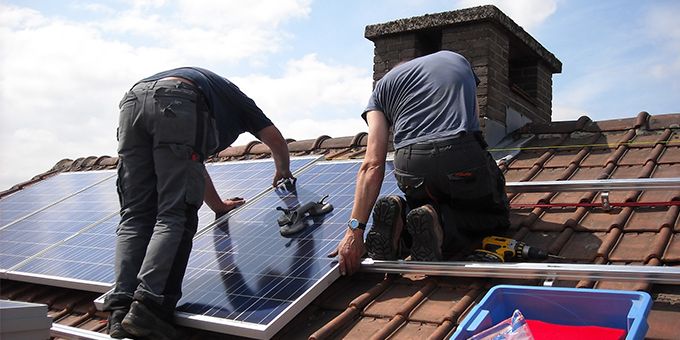Microgrids are smaller-scale versions of standard grids that can branch out to support local areas. When you add clean energy into the mix, you get smart microgrids.
 How Smart Microgrids Will Change the Way We Consume Energy
How Smart Microgrids Will Change the Way We Consume Energy

Jenna Tsui, Technology Blogger | The Byte Beat
An energy grid is the electrical infrastructure for a location that provides power to homes, schools, offices and any other buildings that need it. Microgrids are smaller-scale versions of standard grids that can branch out to support local areas. When you add clean energy into the mix, you get smart microgrids.
What Are Smart Microgrids?
As the energy sector strives to shift to sustainable resources, smart microgrids are pushing that initiative forward.
A microgrid is a small network of energy sources that connect to the bigger energy grid. The difference is that microgrids can detach from the larger grid and operate on their own. In instances of power outages or severe weather, the microgrid can continue to give electricity to the homes and buildings that connect to it.
Smart microgrids run on renewable energy — most commonly solar. They are popular options for rural or isolated communities. Puerto Rico, for instance, is looking to smart microgrids as options for power. After Hurricane Maria devastated the island, policymakers and residents need ways to maintain power even in harsh weather.
Smart microgrids operate in similar ways to the central grid. They first need a generation source, which for renewable microgrids will often be solar energy. Many microgrids will use the central grid as its primary option for energy generation and distribution. However, since solar is becoming cheaper, you may start to see more microgrids using solar before anything else. Once it converts energy into electricity, it can send it to the connected homes and buildings.
As more and more locations and power grids start to implement microgrids, sustainable energy will grow.
How Are They Changing Energy?
The need for clean energy has never been more important. The main change that smart microgrids bring is clean energy, which is why their integration is crucial. Though many countries and cities still rely on fossil fuels, smart microgrids could start to change that.
As climate change results in more extreme weather, power outages will become more common. An area like Puerto Rico, which hurricane season often affects, is a prime example of where microgrids should integrate. Islands and rural areas can stop relying on the larger power grid as their only source of electricity and instead operate on their own when they need to.
Cities are also starting to use this technology, though. Brooklyn, for instance, started a smart microgrid initiative to generate local solar energy. With parent company LO3 Energy leading the initiative, Brooklyn is looking to provide smart microgrid energy to as many residents as possible. In a city, this step is new — energy typically comes from standard grids that use fossil fuels or natural gas. Now, smart microgrids are changing that dynamic.
The use of smart microgrids also helps to mitigate any grid disturbances during outages. This mitigation helps with energy storage, which can then reduce the cost of electricity capacity for any location that uses these grids. As the microgrid's smart servers optimize generation, it can disperse the energy efficiently to all buildings within its reach.
Microgrids will continue to expand with these benefits. As it reaches remote or distant locations, more cities will start to pick up on the necessity. With fewer outages come fewer repairs. With more energy efficiency comes more sustainability and more money saved.
How Will They Evolve?
For the future, smart microgrids will evolve for the better. The main users are remote locations and areas where severe weather hits hardest. However, as major areas like Brooklyn start to implement these microgrids, other big locations will start to catch on. Officials want to keep their residents safe during outages, and smart microgrids allow that comfort.
As they continue to evolve, they will improve upon their reliability and resiliency. Technology is always progressing forward — smart microgrids will develop faster and more durable ways to gather energy and disperse it as electricity. The idea of energy sharing then comes into play. Peer-to-peer (P2P) energy trading is a newer idea that suggests companies or cities could potentially sell excess energy to investors.
Beyond that improvement, though, the renewable factor will continue to grow as well. Since sustainability is a critical factor for cities around the world, microgrids' use of solar energy will influence other energy sources. It's possible, then, that standard, centralized grids will start to use renewable energy one day, too.
Smart Microgrids for Renewable Energy
Smart microgrids ultimately have two end goals: to provide citizens with consistent, reliable energy and to standardize renewable energy in the industry. As areas all over the world begin to see the benefits of smart microgrids, these two end goals are closer than ever.
The content & opinions in this article are the author’s and do not necessarily represent the views of AltEnergyMag
Comments (0)
This post does not have any comments. Be the first to leave a comment below.
Featured Product

